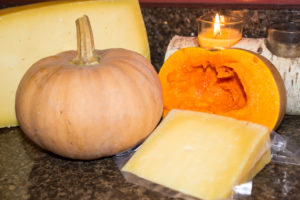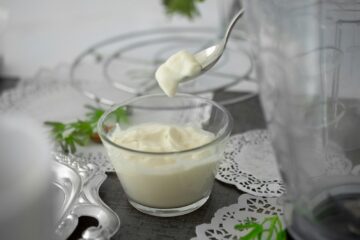 Winter weather is slowly arriving at our farm, letting us and the cows know that it is time to start slowing down for the winter months. There have been expectations of snow, but our pastures are still slightly green and mostly bare. We have spent several cold mornings thawing out the milking system when the temperatures dropped below freezing. Now that the system is freezing in the mornings, we will switch to an afternoon milking time (we are only milking once a day). That way we are milking during the warmest part of the day.
Winter weather is slowly arriving at our farm, letting us and the cows know that it is time to start slowing down for the winter months. There have been expectations of snow, but our pastures are still slightly green and mostly bare. We have spent several cold mornings thawing out the milking system when the temperatures dropped below freezing. Now that the system is freezing in the mornings, we will switch to an afternoon milking time (we are only milking once a day). That way we are milking during the warmest part of the day.
A few of the cows have decided it’s time to start their break before calving and stopped giving milk. We are down to milking 55 now. We will dry about half of them off soon after Christmas. Those are the ones that will be calving early in March. The others won’t be calving until mid-April, so we’ll dry them off around the first week of February. That break gives the cows a rest period from giving milk before they have their babies.
Those cold mornings have frozen our gravity flow system for feeding water and whey to this spring’s calves. Their pastures are all gone. We’ve been giving them hay to eat. Last week we moved them into the shed. We have a feed bunk to give them hay and a winterized water trough that won’t freeze. We don’t want them to tear up the pastures for next year’s calves. Once we dry the cows off after Christmas, we’ll move the calves to our heifer barn and bring the yearlings home that will be calving this coming spring.
We are almost to the point where we can fill milk jugs out of half of a week’s milk and make the rest into cheese, reducing our cheese making to once a week. Fall and winter milk is so rich that our cheese yields are very high. Even though the milk quantity is less, we still end up with a large number of wheels. These we have to try and squeeze into our full cellars. We only have a few more batches of cheese planned for this year. It looks like we will make a little over 26,000 lbs of cheese in 2016.
 We don’t have any new cheeses this month, but we did try a new recipe. For one of the smaller batches we made in November, we tried a true Romano recipe. Now we just have to age it until next fall (Romano is typically aged at least 12 months) and see how it turns out. We still have a few pieces of the Pumpkin Pie cheese left that we made for Thanksgiving.
We don’t have any new cheeses this month, but we did try a new recipe. For one of the smaller batches we made in November, we tried a true Romano recipe. Now we just have to age it until next fall (Romano is typically aged at least 12 months) and see how it turns out. We still have a few pieces of the Pumpkin Pie cheese left that we made for Thanksgiving.
In the winter months, we are only attending our two year-round farmers markets. Boalsburg Farmers’ Market is in the basement of St. John’s United Church of Christ on Tuesday afternoons. Juniata Farmers’ Market at the Station Mall in Altoona is the first and third Friday of every month.
Well, that’s all the news from our farm and cheese cellars for this month. Would you like to get these newsletters every month via email along with our monthly cheese inventory? You can sign up for our monthly updates via the form at the bottom of our How to Purchase page.
Thank you to all of you who support our family farm and allow us to keep making great products.


